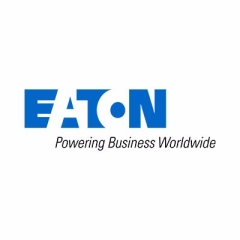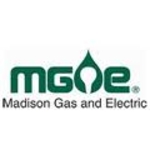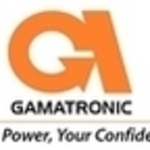
Eaton UPS Primary Use Case
JC
Juno Choe
Radiation Oncologist at East Oregon Cancer Center
We have unstable power in our area and we have a medical device called a Linear Accelerator that we use to deliver radiation to patients. The unstable power was disrupting our operations and the UPS has helped us out with that.
We use Eaton UPS's in a variety of our data centers and for emergency operations in our city.
What we were looking for wasn't necessarily to address challenges we were facing but for something that would reliably supply backup power to us, when needed, at an affordable price.
We have one big UPS at each of our locations. The 9PX is at our Public Works, while at the Police Department we have a 9170, which is a large three-phase UPS. At City Hall we have another large UPS. At each location we have a solution that will give us runtime during a total power outage, of anywhere from 30 minutes to six hours.
For the desktops and remote switches, we have a lot of the 1000s and 1500s.
View full review »Eaton has a lot of reputable years in the data center industry, giving out UPSs to massive data centers. We really rely on these units to ensure that we have no power interruptions. They have a proven track record. Personally, I use them because we have experienced a lot of close calls, where Eaton UPSs saved my infrastructure from any type of downtime.
We have a monitoring software that I am not very familiar with, which just landed on my lap recently. All the global offices for our corporate data center (300-plus locations), a lot of these closets have PDUs in them. I do know some of them are Eaton products, but the majority of them are different.
In my world, we use a little bit of everything. We have our PD UPSs, which are our uninterrupted power supply units. We have the UPS internally to the data center as well as PDUs, so we have UPSes in a lot of our server cabinets.
We have our bigger unit, a 300kVA unit, which is a lot bigger and not a rack-mountable unit. These are standalone frames. If we went into a smaller UPS design, I would consider having a rack-mountable UPS. However, the way certain of my data centers are designed, it has made more sense to have a frame UPS in place, as opposed to a rack-mountable UPS.
View full review »Buyer's Guide
Eaton UPS
October 2025
Learn what your peers think about Eaton UPS. Get advice and tips from experienced pros sharing their opinions. Updated: October 2025.
869,883 professionals have used our research since 2012.
MY
Matt Yorston
Data Center Manger at a educational organization with 1,001-5,000 employees
The units we have are for our data center. We have a data center that needs to be up 24 hours a day, 365 days a year. The three Eaton units make up half of our two-end power structure.
It's pretty straightforward that these are battery backups. The job of these units is that if we have a power outage, they carry the full load of all of our IT equipment until the generator kicks in.
View full review »BJ
Bill_Johnson
VP of Colocation Data Center Operations at H5
UPSs are supporting critical load for data center colocation, and that is true across our national portfolio. We run real estate, but our real estate is "critical-load real estate." We've got data center floors that we lease space out to for IT companies. Those IT companies can be using a rack - a single equipment cabinet - or they can be 25,000 square feet of a data center hall for their enterprise. It's a mixed environment, although we try to specialize at each of our locations in a certain sweet spot. We also have shelf space that we lease to companies, large companies which come in and bring their own UPSs and run that space themselves. It's a good world to be in. I learned by watching some of our customers doing things that were mistakes. I get to learn from their mistakes.
In Denver, we've got four strings. Each string has four 750 kVA UPS modules. I'm using them in Cleveland as well. I've got three systems there, and each system has three 750 kVA modules.
Our organization has always had UPSs; that's part of the business that we do and we do rely on UPSs. Each of our locations, at some point during the year, switches over to UPS before we transition to generators. They are used actively every year. Our organization functions by supplying UPS.
View full review »VT
Vancho Tolomanosi
Founder at IRONCLAD CYBER SECURITY
Eaton UPSs are primarily used in corporate data centers. It's the UPS before the generator starts.
View full review »It services two data centers and critical infrastructure computing devices.
View full review »We have distribution centers. Our newer distribution centers have regular UPS's in them from Liebert. But we have two distribution centers that are older and we keep a small amount of network gear and server gear at those locations, two racks' worth usually. We use the Eaton UPS to support those racks. We can't have our power going down just because of a blip.
They mostly support our Cisco, HP, and Dell gear. We have one UPS in one rack and one UPS in the other rack. They're set up to always be redundant.
View full review »RP
Ray Parpart
Director of Data Center Strategy & Operations at University of Chicago
Our primary use case is mission-critical: data centers, communication closets, building automation systems, our utility plants. All our critical systems are run on Eaton.
Our organization has over 20 three-phase units. We've got the 9395s and a 9355s, the 480V three-phase and the 120V three-phase. Looking forward to leveraging 93PM and the next generation of products
View full review »JH
Jim Hicks
Chief Building Engineer at a computer software company with 10,001+ employees
We use them for network backup or lab backup. These are critical environments for us, environments that we want to keep up in case of loss of power. They have high business impact. We have about 100 Eaton UPSs deployed.
The versions we are currently using that are the new standard are the 93PMs. But we have used all the other ones, the 9390s, the 95s, the 9350s, the 9355s - almost their whole product line.
View full review »DC
David Cantrell
Director of Engineering at Children's of Alabama
We use them for our data center backup and our telecommunications equipment room (TER) and our TER backups for our data systems. We use Centralized UPS for all of our telecom rooms and in our data centers and TERs, as well as throughout our facility and hospitals buildings.
We currently have four units and are getting ready to swap out a GE unit, putting an Eaton in, then we will have five units in total.
We are using both the 9395 and 93PM versions.
View full review »It is for data center support to keep our equipment powered up. It is for backup power.
It is a redundant UPS. We have an A and B for power.
View full review »RV
Robby Vann
Facility Manager at a comms service provider with 5,001-10,000 employees
We have two of the 9395s and eight of the 9315s. They support our data center and the call center. We have them in place to ride through any power blips or outages. They're part of the critical systems for the business. The UPSs have to be in place and keep our data center running and call center running without any kind of interruption.
View full review »KC
Keith Collom
Smart Infrastructure Consultant BAS at Kaiser Permanente
The UPSs back up our critical IT infrastructure. And PredictPulse allows us to manage and reduce downtime of the UPSs. PredictPulse monitors the UPS. It's a cloud service.
View full review »Buyer's Guide
Eaton UPS
October 2025
Learn what your peers think about Eaton UPS. Get advice and tips from experienced pros sharing their opinions. Updated: October 2025.
869,883 professionals have used our research since 2012.









